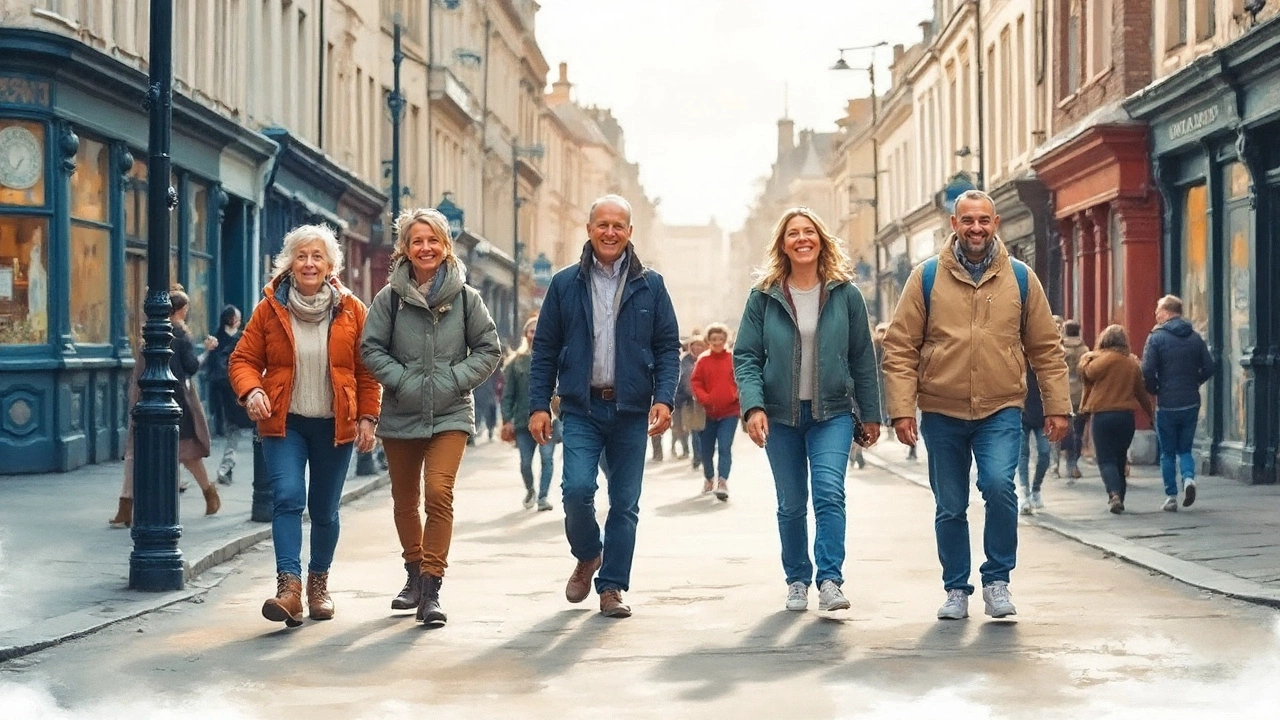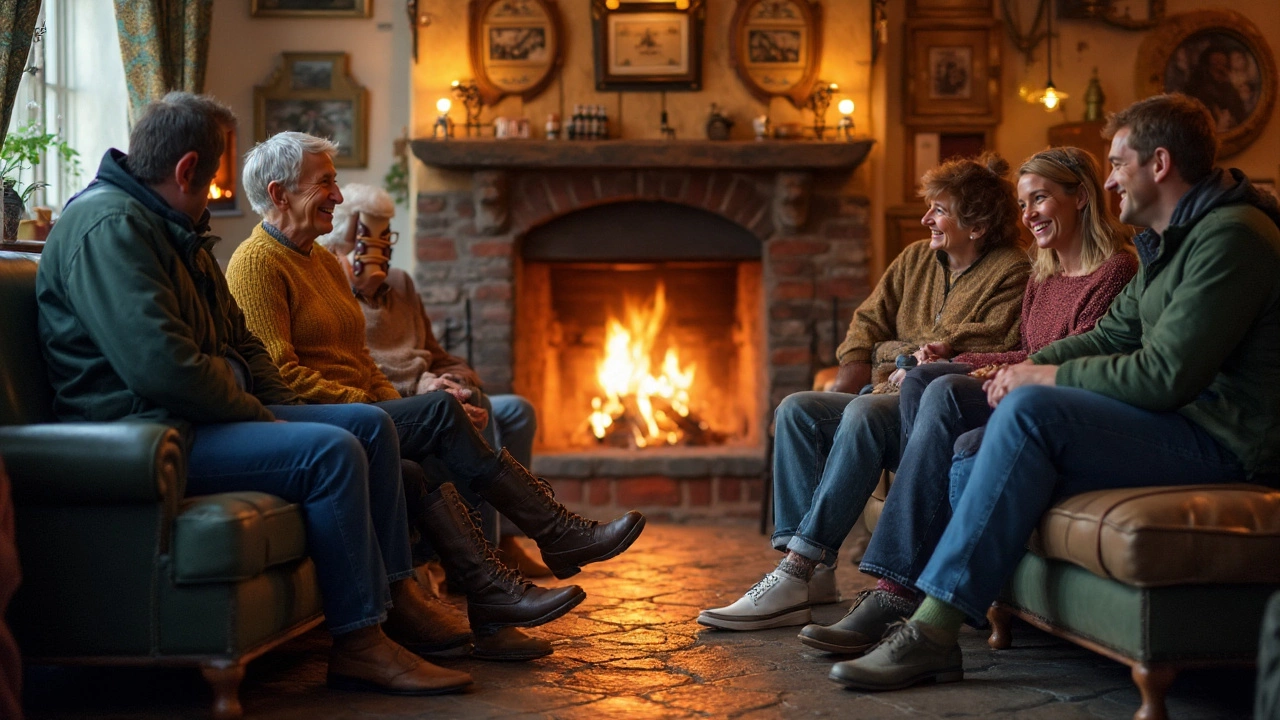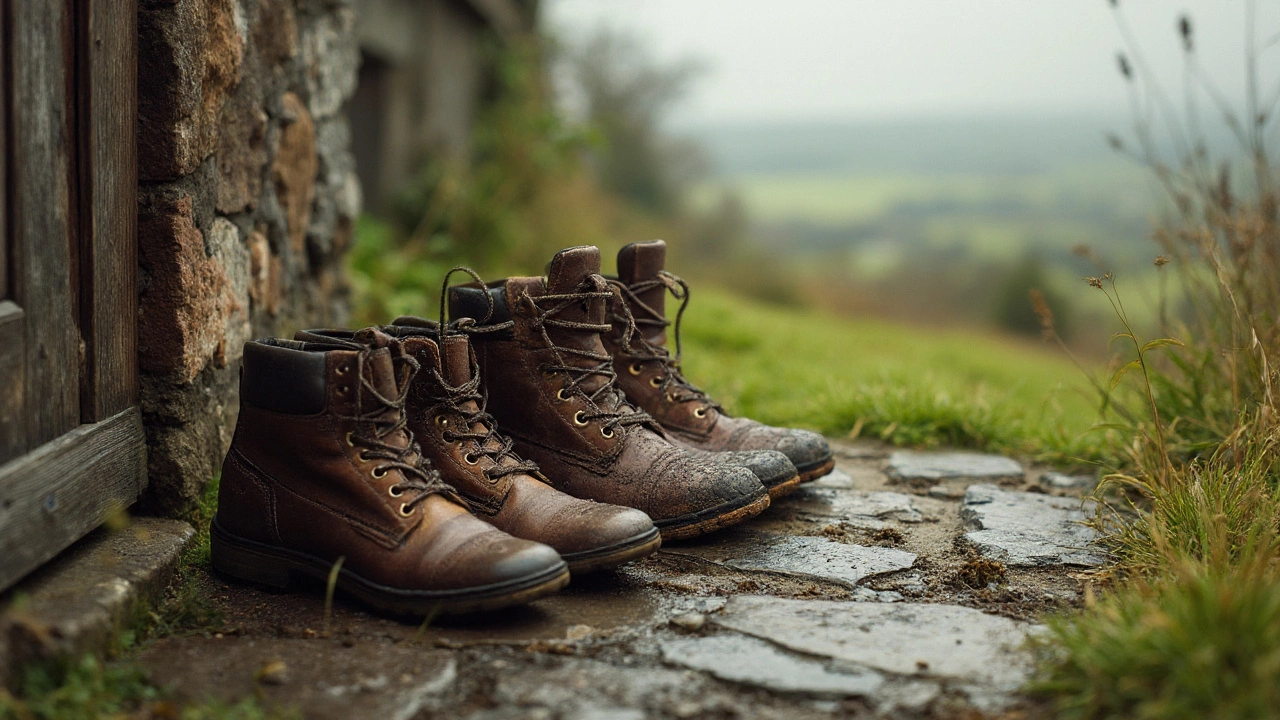Ever tried tackling a full shift in Dublin city centre or clocking ten thousand steps through Limerick streets on a rainy day? You know the struggle: aching arches, tired calves, and that faint regret for ever neglecting shoe shopping. In Ireland, our days are rarely spent sitting. Whether you’re pouring pints in Galway’s bustling pubs, guiding tourists around the Cliffs of Moher, or pacing between the Luas and office desks, you need shoes that play nice with your feet — come drizzle or dry spell.
The Realities of Irish Life: Why Shoe Choice Matters
Now, in Ireland, the weather itself can make or break your comfort. We’re not talking a mythical stroll in Phoenix Park under constant sunshine. It could be lashing rain one moment and blinding you with glare the next. Shoes that keep up with this chaos are priceless. Beyond rainfall (yes, even in June), there’s our mix of cobbled streets, rustic rural lanes, and the not-so-reliable paving stones outside the local Spar.
Standing jobs are everywhere — think healthcare teams at St. James’s Hospital or shop assistants in Dundrum Town Centre. According to Eurostat’s 2024 reports, over 35% of workers in Ireland are on their feet for six hours or more each day. No shock, then, that foot pain is among the most whispered complaints in Irish workplaces. And it’s not just physical jobs; even teachers and retail workers find themselves hunting for better insoles before the term is out.
And let’s not pretend only jobs matter. If you’re a parent on the school run from Malahide to Greystones, you’ve got your own race against the Irish elements. Or maybe you’re chasing after your dog along the sodden Royal Canal. Shoes that can really handle these situations without crumbling (or having you slip near Heuston Station) are a must.
What Makes a Shoe Right for Long Irish Days?
All shoes are not made equal. If you’ve lived here more than a few months, you know pure looks won’t cut it walking through Temple Bar after a gig. The basic checklist for a shoe that will really mind your feet? Support. Cushioning. Weather resistance. Breathability. Grip. You want your shoes to be steady on a wet Grafton Street, but you also need your soles forgiving when you’re pacing hospital corridors or manning a market stall in Cork.
Ever heard a doctor or physio say the best shoe is the one you forget you’re even wearing? That’s the gold standard. Let’s break down what to check:
- Arch Support: Look for a visible arch in the sole or insole. Irish brands like Dubarry and Greenes actually build specific support into their work ranges. Failing that, try custom orthotic inserts from providers like Foot Solutions in Dublin.
- Cushioning: This is more important than most think. Brands like Ecco and Skechers (widely sold in Ireland) are known for impact-absorbing soles. Try squishing the heel—if it feels rock hard, your feet will too by closing time.
- Grip: Wet footpaths are nearly a daily gamble. Vibram or rubber outsoles offer the best protection, used on several Clark’s and Mephisto models stocked at Arnotts.
- Weather Resistance: Leather, GORE-TEX, or even the right synthetic mesh will keep you drier than basic canvas. Waterproofing spray can also do wonders. I made Imogen laugh once when I tested a spray on a trainers and poured half a bottle of Ballygowan on it. Worked like a charm.
- Breathability: Wet feet aren’t just uncomfortable—they can mess up your skin. Shoes lined with natural fibers or those with air holes (without letting water in!) help, especially during muggy spells in July.
- Fit: Don’t trust size alone; try on both feet, walk up and down. The best Irish retailers like O’Mahony’s Shoes in Limerick or Duff Cycles in Dublin offer in-depth fittings and advice.
Let’s put this into context with some cold, hard facts. Here’s a quick look at the benefits (and downsides) of popular shoe types for those busy, busy Irish days:
| Shoe Type | Pros | Cons | Irish Availability |
|---|---|---|---|
| Trainers (Runners) | Good for cushioning, widely available, often have grip. | May lack support; some designs are too fashion over function. | Every sports shop from Elverys to Lifestyle Sports |
| Leather Work Shoes | Durable, typically weather resistant, can look smart. | Can feel heavy; need breaking in. | Local cobblers and chain stores, e.g. Clarks, Dubarry |
| Clogs & Nursing Shoes | Amazingly comfortable; designed for standing. | Not always stylish; not for outdoor jobs. | Medical supply shops, hospital canteens |
| Work Boots | Stable, built for rough terrain, waterproof. | Overkill for indoor use; can be hot in summer. | Widespread: Arnotts, Redwing, Safety Direct |

Top Recommended Shoes for Ireland’s Long-Dayers
Walk into any Blanchardstown Centre shoe shop, and you’ll notice familiar names. But which actually work here in Ireland, not just look grand in a catalogue? For standing, walking, and the Irish weather’s little surprises, these options tend to tick the right boxes.
- Dubarry: Born in Ballinasloe, known for boots that defy Irish puddles. They’re tough but don’t feel like you’re dragging weight around all day. Great grip, solid arch support, stylish enough for office or pub.
- Ecco: Danish, but embraced here. Good for city workers and folks who need something between a “runner” and a dress shoe. Tons of foam and shock absorbency—goodbye tired heels.
- Clarks: The go-to brand for comfy, semi-formal work shoes. Worth a hunt in shops like Clerys or on Grafton Street. Their Un Loop and Unstructured ranges are especially forgiving.
- Skechers: Not just for teenagers. Their Work and Arch Fit lines are secretly beloved by nurses in Irish hospitals. Cushy, with wide fits if needed.
- Dr. Martens: Heavy, yes, but also durable and sometimes waterproof. A solid pick for teaching and creative jobs—bit of ‘90s rebel left in them too.
- Brogues from local shoesmiths: Can be a real winner for trad sessions and dressier needs. Find them made in towns like Portlaoise or Galway, just ask for memory foam or cork inserts.
- Keen and Merrell: Imported, but both now found in bigger shops countrywide. Amazing on rural terrain, muddy GAA sidelines, or outdoor events.
If you’re on a budget, Aldi or Lidl sneaker deals are tempting, but check for real cushioning inside—not all are made the same. Some of the best bargains come in January or July at the famous sales in Kildare Village or Brown Thomas.
It’s worth trying on shoes at the end of your day, since feet swell. Trust me, after a mad day dashing across the Liffey twice for errands, nothing fits the same in the evening as the morning.
Smart Tips from Real Life in Ireland
I learned a few hard lessons. Visiting Howth cliff paths last winter in light trainers? Big mistake—soggy socks for hours. Bringing shiny new brogues to Electric Picnic? Blisters before the first headline act. Here’s what helps in real Irish conditions:
- Rotate your shoes: Don’t wear the same pair every day. Give each set time to dry out; your feet (and nose) will thank you.
- Try insoles: Loads of Irish pharmacies and lifestyle shops stock gel or cork insoles. Scholl brand and even locally made ones are a godsend on marathon shifts. If you have flat feet, seek expert-fitting in one of Dublin’s specialist shoe stores.
- Listen to your feet: Sore backs, aching knees, or even headaches sometimes start at your feet. Swap to softer shoes and see if things improve.
- Embrace the waterproof spray: Works on leather and (some) fabric shoes. A lifesaver down Connacht way, where puddle-dodging is practically a sport.
- Socks matter: Cotton socks are grand for most, but switch to wool on blistery cold days or for proper hikes—Keeps feet warm even if wet, a trick that’s lasted centuries in Irish farming.
- Visit local shoe shops: Not just for buying, but for advice. Shoe store staff in Ireland, especially family-run shops, know their stuff. Ask about wide-fit options or waterproofing.
- Don’t follow trends blindly: Just because everyone’s in trainers doesn’t mean they're made for you. Prioritise comfort over style — your body will back you up.
- Break in new shoes slowly: Especially leather. Wear them around the house or for short walks before taking on a full Kilkenny walking tour or long shift at the market.
And here’s a nugget for tourists: Don’t skimp on shoe quality before arriving in Ireland, expecting “sure it’ll be grand”. Irish walking tours, festivals, or wedding weekends demand more respect from your feet than most countries. Market traders, pub staff, or even Gardaí at the parade — ask them what gets them through.

Getting the Most from Your Irish Footwear
You don’t need ten pairs, but giving your shoes the right attention pays off. Rotate between two or three pairs. Clean and waterproof them regularly. If you’re braving sodden fields at a GAA match, have a backup in the car. After getting caught in an unexpected downpour near St Stephen’s Green, I’ve learned to stash an extra pair of socks and a plastic bag — it’s saved my day more than once.
One last tip — get your feet measured now and then, not just as a kid. Weight changes, injuries, or just normal aging can shift your size. Many Irish shoe shops still offer proper fitting, so don’t be shy. It only takes a minute. And remember, most brands (even big European ones) now carry extra-wide, high-arch, or vegan models, so you’re not stuck with one look.
Bottom line: Shoes aren’t just about fashion for Irish life. They’re about the freedom to keep moving, rain or shine, work or play.
